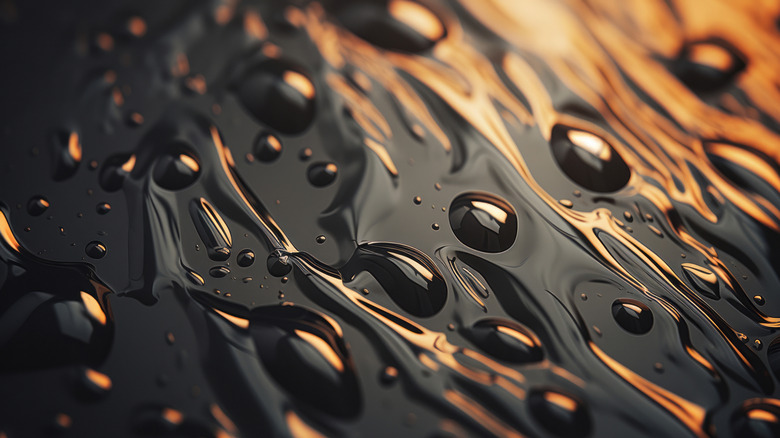
We still don't entirely understand why new cars have stopped coming with oil dipsticks installed. Car manufacturers claim the shift towards digital monitoring is happening to improve accuracy and convenience, but dipsticks can do a lot more than tell you if your oil level is low. They can also tell you about the quality of your oil and if it's gone bad. However, if you retrieve the dipstick and it has bubbles on the oil layer, then you may have a problem.
If you check your oil regularly and occasionally see bubbles, it might be no big deal. The motion of the crankshaft introduces some air to the oil as it turns over, which means that bubbles may form in the oil through natural agitation. That's just science, and these bubbles shouldn't pose much of a problem. However, the size of the bubbles, their frequency, and how long they last can tell us if something more is going on. Here's what you should keep an eye open for.
 LarysaPol/Shutterstock
LarysaPol/Shutterstock
A little bit of bubbles on the dipstick isn't a real issue if they disappear quickly after the engine is turned off. However, if they're persistent, large, or accompanied by a milky foam substance, then there can be a few things wrong. More often than not, frothy bubbles in the oil mean the car engine coolant has found its way into the engine oil. If this happens, then you need to see a mechanic, pronto.
Bubbles in the oil can also be caused by aeration. Oil aeration is the process of air mixing with the engine oil, which leads to air bubbles that prevent the oil from keeping engine components properly lubricated so they don't grind together and cause engine wear. Aeration can happen during an oil change, although another common cause is high engine speeds. When an engine hits high RPMs, air can be forced into the oil, which in turn, will cause bubbles to form. This can lead to reduced lubrication, overheating, and lower engine efficiency.
Aeration may not be as bad as a coolant leak, but if you notice bubbles in the oil, this could be an early sign that you're already experiencing some excessive engine wear. Last but not least, overfilling your oil can also cause bubbles, so make sure you know how to check your dipstick properly — assuming your car still has one, that is.














